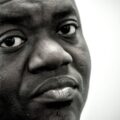His Blues to Be Somebody: Charlie Parker’s Early Years

Kansas City Lightning: The Rise and Times
of Charlie Parker
by Stanley Crouch
Hardcover, $27.99
Harper, 2013
Every superhero needs a suitable origin story, and great jazz musicians are no exception. In Kansas City Lightning: The Rise and Times of Charlie Parker, the acclaimed cultural critic Stanley Crouch describes the process through which Charles Parker, Jr., born in Kansas City in 1920, metamorphosed into “Bird” Parker, the fierce alto saxophonist who would conquer the jazz world in the 1940s and 1950s. Based on thirty-plus years of research, the first volume of a two-part biography covers Parker’s formative years and ends with him on the precipice of greatness. Throughout, Crouch emphasizes musical influences and historical context over gossip and speculation as he details the determination and intellect that helped Parker become the single greatest alto saxophonist—and perhaps the premiere jazz soloist—in history.
According to jazz critic Gary Giddins, “Parker was the only musician after [Louis] Armstrong to influence all of jazz and almost every aspect of American music—its instrumentalists and singers, composers and arrangers.” This influence manifests itself most obviously in Parker’s approach to improvisation, the jazz musician’s lingua franca. Critics point to a number of different breakthroughs when they discuss his unique approach to building solos, but all focus on his use of harmonics. In Jazz, Giddins and Scott DeVeaux write that, in his intensive study, Parker discovered that “any note, no matter how dissonant, could be made to resolve in a chord.” This realization opened unexplored avenues for soloists and led to a new, higher degree of complexity in the art form. While many older musicians rebelled against Parker’s use of dissonant harmonies and complex chromatics, those who did embrace it, and him, discovered that, in DeVeaux’s words, Parker “had the knack of making the most radical innovations seem instantly understandable, masking both the bristling complexity of the musical language and the disciplined intellect behind it.”
In comparison to these harmonic and melodic breakthroughs—elements that could be studied and incorporated into one’s playing—the uniqueness of Parker’s sound was unparalleled. As Ted Gioia writes in The History of Jazz, Parker worked from an “economy of means… Each note is articulated with focused energy, each phrase smoothly executed but infused with an acerbic aftertaste.” He eschewed “the saccharine overtones, the influence of the sweet bands, the various ways the rough edges of jazz music had been softened for consumption by a mass audience… in favor of a purer conception of jazz: an art music with the emotional pungency of a battle cry.” This “purer conception” is evident in the playing of the many generations of saxophonists who have followed him, including players as disparate as Jackie McLean, John Coltrane, and Ornette Coleman. One unfortunate by-product of this demanding and complex style, however, is that Parker never attained the popularity of Armstrong, Ellington, and big bandleaders of earlier decades. At the same time that Parker (and bebop, the music he helped create) opened up new possibilities for musical expression, it also unintentionally contributed to the narrowing of the jazz audience, abandoning the dance floor in favor of the jazz club in the decades following World War Two.
Crouch opens this volume in Parker’s pre-bebop days, with a tour de force description of the saxophonist’s first triumph in New York City, in 1942, with the visiting Jay McShann Orchestra. Performing at the legendary Savoy Ballroom, Parker “leaned forward, sweating like a waterfall, delivering his message as though he were on a mountaintop.” That message provides urgency for the mystery of how “Parker transformed himself from an incompetent into a real player” in only seven years. From his obvious fluency with the subject at hand to his crisp, energetic, vivid prose— “McShann could send Walter Brown out there with Piggy growling behind him; then Bird would step up a chorus later, slipping arabesques of musical freshness into the gutbucket”—Crouch writes about music with the ear and mind of a trained expert and the passion of a lifelong devotee.
Parker’s own story begins in Kansas City, where young Charlie was raised by his doting mother, Addie, in a city that Crouch describes as a “latter-day Wild West,” thanks to Mayor Tom Pendergast’s machine politics and close connection to the city’s criminal element. Yet this toxic combination also helped the city’s jazz scene flourish, rivaling New Orleans, Chicago, and New York in the 1920s and 30s. Though Count Basie and Lester Young—the city’s two most famous musicians—left before Parker reached maturity, he was never at a loss for musical role models. An impressive number of musicians, bandleaders, and teachers helped Parker develop his skill, whether in person or via broadcasts and recordings. In Crouch’s telling, well-known artists like Duke Ellington, Roy Eldridge, and Jay McShann stand alongside more obscure ones like Chu Berry and Buster Smith.
Crouch focuses on two key moments that drove Parker’s development during these years: his early failure at a jam session with some of Kansas City’s professional musicians and the influence of Lester Young’s playing on the young saxophonist. The first occurred in the summer of 1935, when Parker was a fifteen-year-old high school student. As Parker himself recalled years later, “I knew how to play, I figured. I had learned the scale and I’d learned how to play two tunes in a certain key… I didn’t never stop to think about there was other keys or nothing like that.” His incomplete education leads to a predictable end: “They laughed me off the bandstand. They laughed so hard it broke my heart.” This was the watershed moment when Parker became so serious about his music that the neighbors complained about the hours he spent practicing. In Crouch’s words, “His feelings were smacked hard that night on the bandstand—hard enough that he went home crying—but he later told trumpeter Oliver Todd that he’d decided there and then to become ‘the greatest in the world’.”
Desire, alone, wasn’t enough for Parker to achieve this goal. The more he practiced, the more comfortable he grew with his instrument, but it wasn’t until he began to closely study the playing of one of his idols, Lester Young, that he moved from proficiency to originality. Young was Kansas City’s “lead demon,” prepared to take on all-comers in the city’s competitive jam sessions. Like others of the younger generation, Parker was drawn to “the steadiness of [Young’s] imagination. The longer he played, the better he sounded. His ideas didn’t stop. They were fresh and aesthetically waterproof.” By following Young’s jam session exploits and studying his recordings with Count Basie, Parker “recognized the older player’s taste for long melodic lines, the linear inventions that gave lyric quality to his playing.” His attraction to Young also links Parker to Louis Armstrong, the trumpet virtuoso and preeminent jazz soloist of the day. Just as Parker was influenced by Young, so Young had earlier studied Armstrong’s improvisations on his influential Hot Five and Hot Seven recordings. By pointing out this link, Crouch shows that Parker was more than a comet, ex nihilo, streaking across the jazz sky. His playing was informed by the best that had come before him.
But Parker was equally influenced by his peers, particularly Buster Smith and New York City guitarist Biddy Fleet. Smith, known as “Professor” for his skills as a writer and arranger, was one of Kansas City’s preeminent bandleaders when he took the young Parker under his wing. In Smith, Parker found someone who was as interested in exploring new harmonics and chord progressions as he was. The connection was enhanced by their shared experiences in Kansas City: “Buster Smith then had that strange, discontinuous style that one could see was also a reaction to what he was looking at from the bandstand. That discontinuity was later heard in Charlie Parker. But it could easily have some of its roots in Slaughter’s Hall [a popular local venue].” Their relationship established a pattern that would repeat itself in subsequent bandstand brotherhoods, and especially in his partnership with trumpeter Dizzy Gillespie.
Next comes Biddy Fleet, a “symphony hound” with a “shared concern with breaking out of common territory.” This key relationship, established during Parker’s first sojourn in New York, serves as a necessary correction to the conventional thinking of Parker as a saxophone savant, someone who needed others to intellectualize the ideas that flitted, fully-formed, through his mind. “Biddy and Charlie were following their ears but in a very systematic fashion,” Crouch writes. “They moved through their music note by note, increasing their technical command in much the same way that apprentice mechanics learn the workings of automobiles by lying under them for hours and learning part by part how the engines and transmissions are put together and what makes them function.”
At times, Crouch abandons the thread of Parker’s personal life altogether, allowing the development of the music to take top priority. But he makes up for this with insights into the contemporary figures who inspired Parker, as well as many other African American men of his generation. Two boxers in particular present contrasting approaches to race and manhood: Jack Johnson, he of the controversial lifestyle, and the more clean-cut Joe Louis, who was heavyweight champion during Parker’s adolescence. Through the lens of these two men, Crouch outlines the options that were available to African American men in the early decades of the twentieth century.
By the time Parker was entering manhood, Crouch writes, “Johnson’s day as a national black hero was done, his conduct considered despicable.” However, Louis—and his musical counterpart, Duke Ellington—offered models of how to assert one’s individuality without overstepping the dangerous taboos prescribed by racism. “For the easeful quality of his bearing, for his special brand of elegance, Ellington became an inspirational example of deportment to upcoming generations, who would soon become impatient with any kind of minstrel demand, within or outside of show business.” Bandleader Billy Eckstine told Crouch, “Bird was totally influenced by Duke: he could say things in a classy way and they worked. Duke made everybody want to have more class.”
Unfortunately, this desire for class did not keep Parker away from serious drug use. While reports differ as to whether or not he was already addicted to heroin while living in Kansas City, Crouch seems certain that he was a heavy morphine user (in addition to smoking marijuana, a common pastime for jazz musicians of the age). This addiction, which would prove to be Parker’s undoing, impacted his life from an early age. He once sold his wife’s possessions without telling her. He was constantly on the verge of pawning his own instrument. His drug-fueled unpredictability led bandleader Jay McShann to assign one of his band members the role of babysitter: Gene Ramey, the band’s bassist and lead Parker champion, took on the role, chauffeuring Parker around town, keeping his saxophone in between gigs, and accompanying him to the marijuana fields by the Missouri River, where Parker would secure enough of the drug to maintain his high. It’s a testimony to Parker’s “disheveled grace” that, even before he’d reached his musical zenith, a leader of McShann’s caliber was willing to go to such lengths to keep the saxophonist in his band.
All of this volume is prelude, however. Parker’s decade of painstaking work, and the lessons he learned from his predecessors, did not bear fruit until he made his first recording, a private four-minute performance of two standards, “Honeysuckle Rose” (one of the two compositions he had been prepared to play during that first failed jam session) and “Body and Soul.” Crouch ends this volume with a bravura description of that recording: “He blows without hesitation, lurching forward with pure lyric power. Swing and control are already there. No prisoners taken and none demanded. He sees the music clearly and knows what he must do with it. It comes to him in an unfinished outline, and he proves himself in private, not for that moment alone, but for all time.” This performance is the distillation of everything Parker had learned from Lester Young and Chu Berry, Buster Smith and Biddy Fleet. In blending their influences with his own unique voice, Parker “was beginning to realize that no established genius, however rough, tough, and dreamily hypnotic, could hear what he was hearing. Perhaps what he heard was actually his and his alone.” The record—“Honey and Body,” as it’s known to Parker aficionados—is a prelude to bebop, the sub-genre that Parker would champion in the years to come. This new style would eventually, unexpectedly, supplant the music of Armstrong, Young, and Ellington for primacy in the jazz world. Readers will have to wait for the second volume, however, to see what Parker makes of his first “test flight.” Based on Crouch’s triumph with Kansas City Lightning, the arrival of this follow-up should be greeted as a major publishing event.
About Matthew Duffus
Matthew Duffus is the author of the novel Swapping Purples for Yellows and the poetry chapbook Problems of the Soul and Otherwise. His collection Dunbar's Folly and Other Stories is forthcoming in October 2020.




